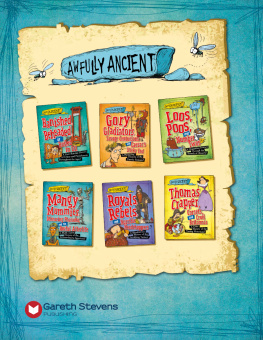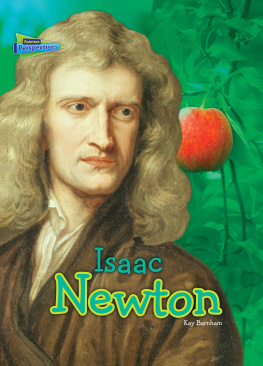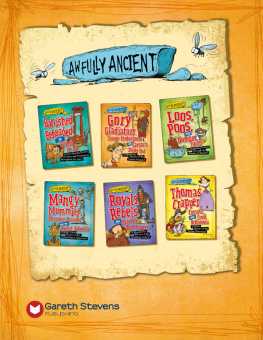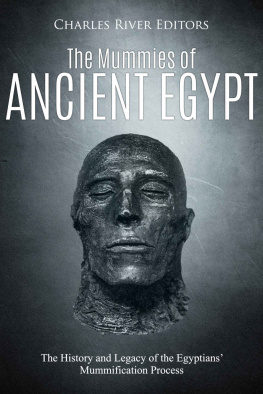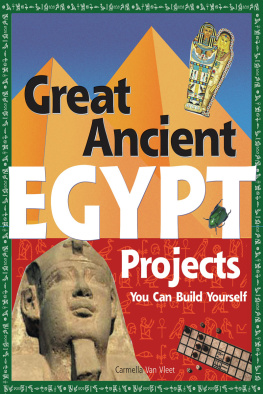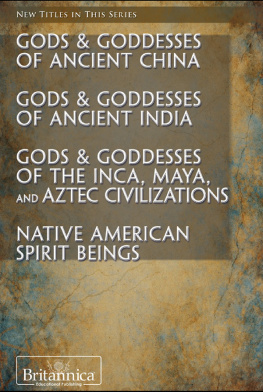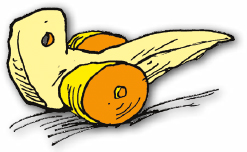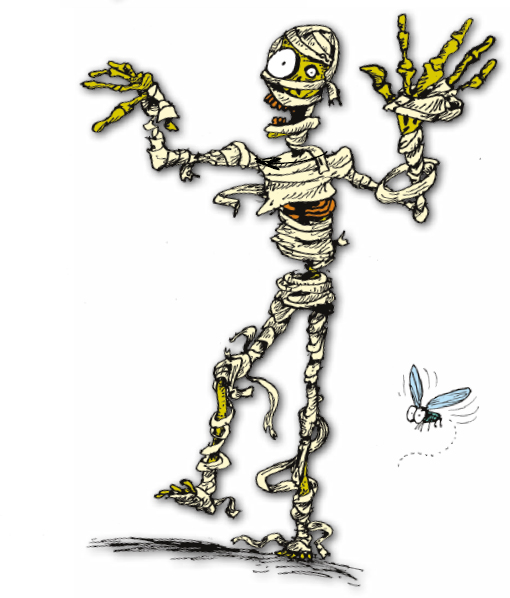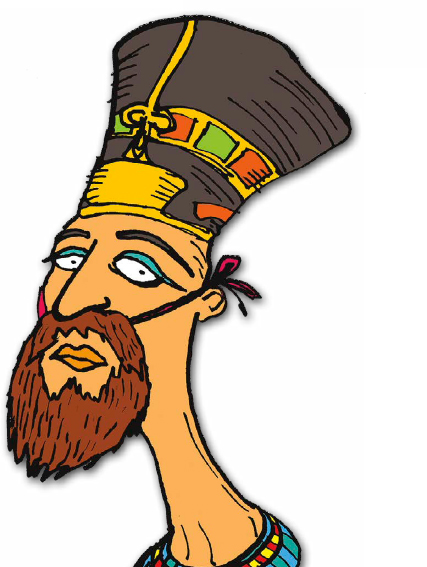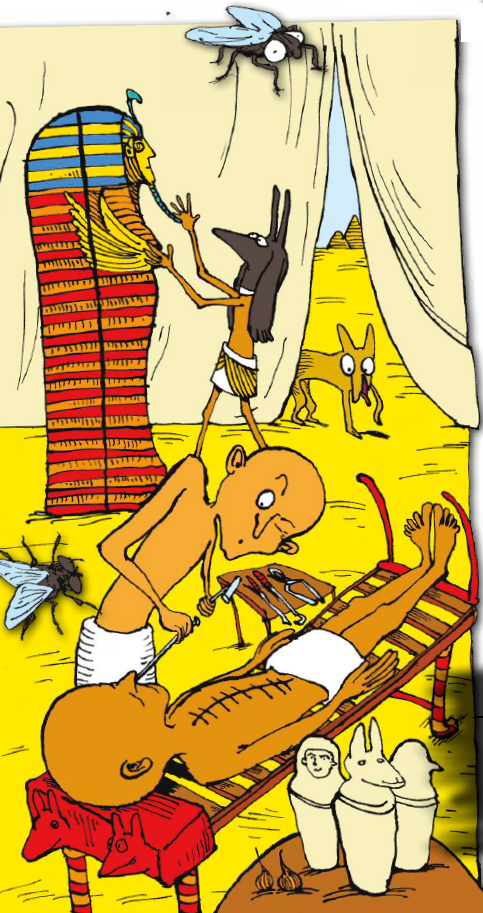
Please visit our website, www.garethstevens.com.
For a free color catalog of all our high-quality books, call toll-free 1-800-542-2595 or fax 1-877-542-2596.
Library of Congress Cataloging-in-Publication Data
Barnham, Kay.
Mangy mummies, menacing pharaohs, and the awful afterlife: a moth-eaten history of the extraordinary Egyptians! / by Kay Barnham.
p. cm. (Awfully ancient)
Includes index.
ISBN 978-1-4824-3125-4 (pbk.)
ISBN 978-1-4824-3128-5 (6 pack)
ISBN 978-1-4824-3126-1 (library binding)
1. Egypt Civilization To 332 B.C. Juvenile literature.
2. Egypt History To 332 B.C. Juvenile literature.
I. Barnham, Kay. II. Title.
DT61.B37 2016
932.01 d23
Published in 2016 by
Gareth Stevens Publishing
111 East 14th Street, Suite 349 New York, NY 10003
Copyright 2016 Wayland /Gareth Stevens
Senior editor: Julia Adams
Illustrator: Tom Morgan-Jones
Designer: Rocket Design (East Anglia) Ltd.
All rights reserved. No part of this book may be reproduced in any form without permission from the publisher, except by reviewer.
Manufactured in the United States of America
CPSIA compliance information: Batch #CS15GS.
For further information contact Gareth Stevens, New York, New York at 1-800-542-2595.
Do you suffer from hair loss? If so, you might (not) want to check out some of our rub-in remedies on .
Learn about the little ones,
Wanna make a mummy? Turn to to learn the insides and outs.
Contents
Hands off!
Ancient Egypt
Mangy Mummies
The Ba and the Ka
Destination: AFTERLIFE!
Ye Gods and Goddesses!
Fabulous Pharaohs
Who Killed Tutankhamun?
A Whos Who of Ancient Egypt
Whats up, Doc?
Puzzling Pyramids
Young Egyptians
Lets Party!
The End
Glossary
More information
Index
Ancient Egypt
Pharaoh Pepi II used to cover some of his slaves in honey and watch the flies swarm hilarious?
What pops into your head when you think of ancient Egypt? Mysterious mummies and stunning monuments? Fascinating pharaohs and great gods? Top marks if you thought of any of those. But how much do you really know about this ancient civilization? Did you know that ancient Egyptian mummies werent called, er, mummies? Or that female pharaohs wore beards?
Can you believe that Pharaoh Pepi II got a buzz out of using some of his slaves as honey-coated flypaper? And that Tutankhamun married his half-sister? Ewwwww.
This book will transport you to the very heart of ancient Egypt to reveal fascinating facts about the ancient civilization that lasted for over 3,000 years.
Around 500 BCE, the ancient Greek Herodotus became one of the earliest travelers to visit ancient Egypt and write about it. The trouble was, Herodotus couldnt speak the language and sometimes got a little mixed up.
Nowadays its mainly sailors and old ladies who have all the beardy fun. Not so in ancient Egypt...
Everything either side of the flooded area of the Nile is basically desert.
He may have gotten some things wrong, but Herodotus still provided some useful insights into ancient Egyptian life.
But he did get one thing absolutely right, and that was the importance of the River Nile. Long ago, the great river flooded the surrounding land every year and left behind a rich deposit of glorious mud, making the soil extremely fertile and the ideal place for people to live and to grow crops. Egypt is the gift of the Nile, said Herodotus, because without it, Egypt as we know it simply wouldnt have existed.
A LOOK BACK IN TIME
The Nile is the longest river in the world, measuring a whopping 4,132 miles (6,650 km) from source to sea. It ends in the Mediterranean Sea. But where does this magnificent river actually begin? It was John Hanning Speke, a Victorian adventurer, who found out the answer over 150 years ago. He tracked the rivers source down to Lake Victoria in central Africa. There are no prizes for guessing who he named the lake after.
Mangy
Mummies
Long hooks were used to drag out the brains - ew!
Canopic jars like these were used to store all the scooped out sloppy body bits.
An ancient Egyptian who turned dead people into mummies was called an embalmer. They made sure that a body was so well preserved, it would stay in excellent condition for thousands of years.
Hold your nose
The embalmers workshop wouldnt have been a very pleasant place to be. Just imagine lungs, livers, and long coils of intestines soaking in preserving salts, while flies buzz overhead before landing on blood-soaked sand, and youve sort of got the picture. Urgh.
All dried out
More than half of a persons body is made of water. So once the embalmers had dried it out, a mummy was not only stiff, but quite light, too.
Mummy-mummiya!
Egyptians didnt use the term mummy to describe a preserved, bandaged body! Mummy comes from the much more modern Arabic word mummiya, meaning the wax or bitumen black, squishy stuff that was used to seal coffins. Archaeologists have found two words that the ancient Egyptians used to describe mummies: khrts, which means bodies, and twts, meaning images.
Inside-out
If the dead persons organs and other squishy bits were left inside the body, bacteria would grow and the whole mummy would go rotten. So the embalmers first job was to take all the insides out.
The embalmer poked a long hook up the nose and dragged out the brain. Anything left behind was scraped out with a long-handled ladle. Next, the abdomen was cut open and all the organs removed except one. The heart was left untouched, because the mummy was going to need it to travel to the afterlife. The intestines were hauled out and, along with the organs, washed in palm oil and stored in canopic jars, ready to pop in the tomb, too. Then the empty body was packed with salts and left to dry out for 40 to 70 days before being wrapped in bandages.
Next page
